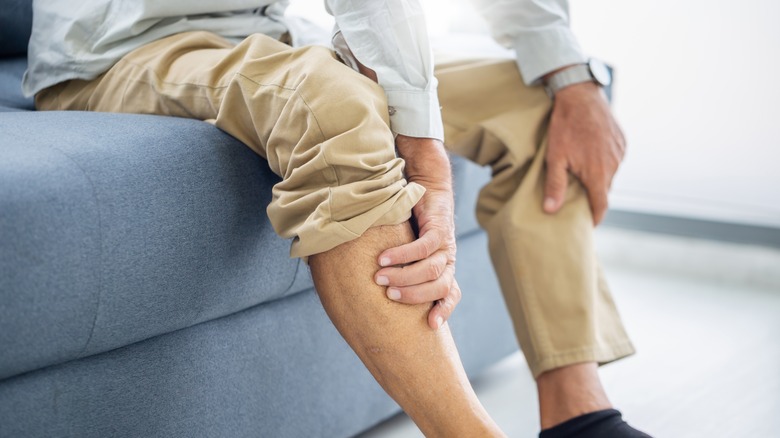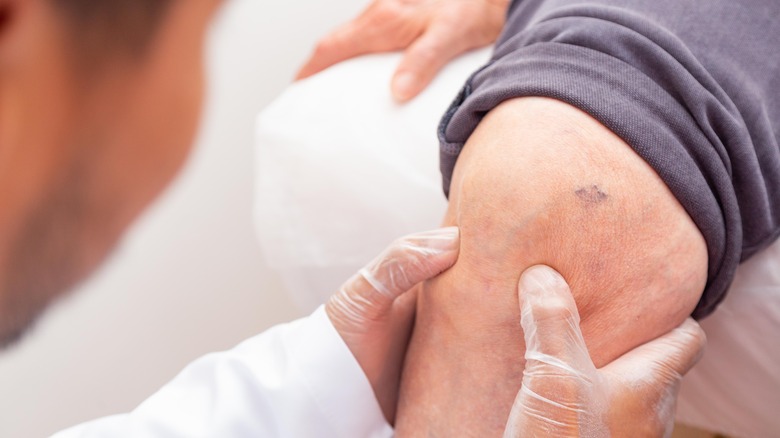This Is When You Should Worry About Leg Pain
"Leg pain is like back pain, in that millions suffer from it," cardiologist Dr. Manesh Patel tells Duke Health. However, not all leg pain is the same. A broken bone, sprain, or sudden muscle cramp can all elicit different degrees of pain and produce a myriad of different physical sensations.
Per Medical News Today, leg pain most often falls into one of three categories: musculoskeletal, neurological, or vascular pain. The pain may be mild and ongoing or may be abrupt and sharp. Depending on the cause, individuals may experience numbness, tingling, burning, or aching. Let's take a look at some different causes of leg pain to determine when medical attention may be necessary.
Some types of leg pain can stem from physical activity such as running, explains Medical News Today. For example, pain at the back of the thigh muscle may signal a hamstring strain, which can result from over stretching or not stretching enough prior to exercise. Similarly, shin splints may cause extreme muscle and bone pain due to intense exertion during exercise.
In the event of a leg injury, be sure to consult with your doctor. Mayo Clinic suggests seeking immediate medical care if your injury has a deep cut or exposed bone or tendon, or if you hear a grinding or popping noise at the moment of injury. However, not all leg pain is the result of trauma. In some cases, leg pain may be due to a health condition.
Health conditions associated with leg pain
According to WebMD, pain, swelling, and warmth in the leg can indicate deep vein thrombosis (DVT). DVT can be fatal if it develops into a pulmonary embolism (PE). Characterized by difficulty breathing, chest pain, and sometimes coughing up blood, a pulmonary embolism warrants immediate emergency medical care.
Peripheral artery disease (PAD) is another condition associated with leg pain. "PAD is caused by a narrowing of the arteries that supply blood to the legs," Heart and Stroke Foundation researcher Dr. Ross Tsuyuki told the Canadian Cardiovascular Congress (via Science Daily). Caused by the buildup of plaque, the condition causes an increased risk of cardiovascular disease and stroke. Symptoms include leg pain during physical activity, improper wound healing, coldness, and dead tissue. The American Heart Association says inadequate toenail or leg hair growth have also been associated with PAD. Because it can be life-threatening, researchers suggest that adults at least 40 years of age be screened for the condition (per Science Daily).
Of course, many causes of leg pain are less serious. Mayo Clinic suggests seeing your doctor as soon as possible if you develop any serious leg symptoms for no apparent reason. This includes if your legs are pale or cool, or if you experience swelling, calf pain, fever, or signs of infection like redness, warmth, or tenderness. Seek immediate medical attention if you can't walk or put weight on your leg, or if you have pain, swelling, redness, or warmth in your calf.


